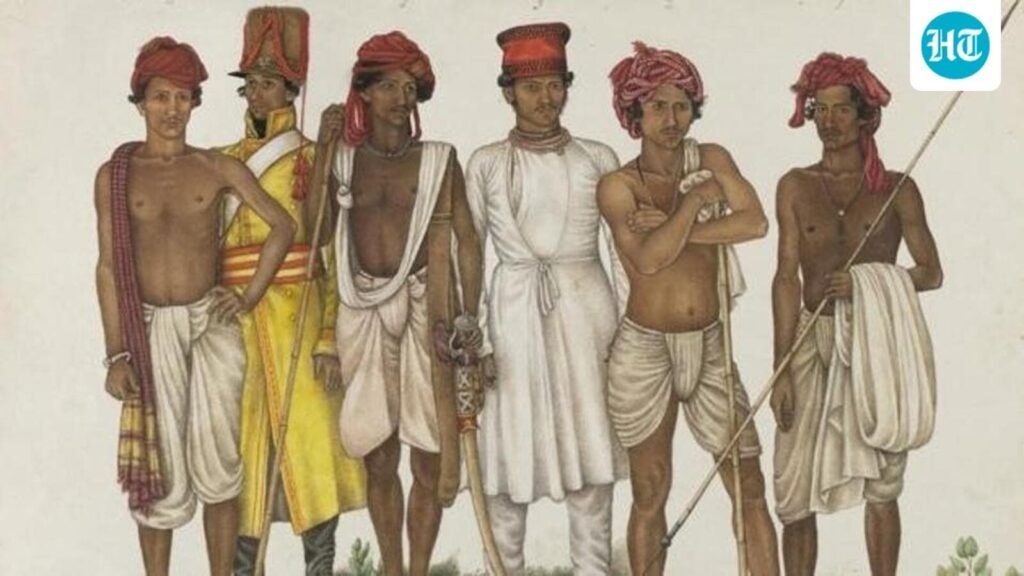
Nothing like a modern census existed before the first such experience was conducted between 1865 and 1872 and then in 1881 by the English colonial government that rled India. However, the first reliable census is considered to be that of 1901 when India’s population was estimated to be close to 30 years. Before then Between 1901 and 2011 censuses, there has been an over 350% increase in India’s population which has crossed 1.4 billion. After a delay of over six years India’s latest census is set to begin in 2026-27.

How then Do We Possibly Understand India’s Demography in Pre-Modern Times? As we move further back into the past, the sources of information on population dwindle. There are the usual accounts related to tax collection and land records, particularly during the mughal rules over time of North and Central India. Then there courtrs’ Accounts of Kings and Kingdoms, Both Extant and Extinct, these hoary tales too control some references to population and their dispersal due to man (For Instruction Drough and Disease). And finally, there are accounts left by travelers to India starting from fa hien (4th century CE), HIEUN TSANG (7th Century CE) to IBN Batuta (? CE), CE Beruni (), Al Beruni (), Barbosa and SEVERAL OTHERS AFTERS Century, these travel a lot about people and customs that prevailed in the past. Despite these sources the process of assessing the population in the early modern, medieval and ancient past is based on revered on review projections IE Journeying from the KNOWN to UNKNOWN to UNKNOWN Numbers to estimate what they might have been in the past.
Earliest glimpses of population
Both literature and Epigraphical Evides Within and outside India but they are all indequate in undress the numbers or population of such of such groups of people or regions where they are Resident. The Ashokan Edicts from the 4th Century BCE Too Contain Rich Information About Kingdoms and Various Regions, Found Written in Various Scripts from Kharoshti in Present Day Pakstan to Local Prakstan to Local PRAKITAN TO LCRITAN to Loc Karnataka, they capture the vast diversity of Indians more than 2,000 years, but they too remain silent when it comes to giving quantitative data. The only Exception is the Reference to the Great War in which Hindreds of Thousands WERE TAKEN CAPIVE, And Many More Times Slain and Maimed. The relevant part of the inscription reads as follows, “When King Beloved of the Gods Priyadarsin had beed eight years, (The Country of) The Kalingans was conquered by (Him). In number the men who we WHO was deported thehes, one Hindred Thousand in Number WHO WHO WHO WHO Slain There, and Many Times as Many Thos who Died. “
These numbers are indicative and while it is likely that actual numbers were very large, they were wire but a fraction of whats is stated in the edict. Nevertheles, Urbanization Grew and So did population during the Mauryan Period (5thbce- 2nd BCE). According to Tym Dyson, Author of a Population History of India, “Archaeological evidence from two districts in the core of the core of the basin has been interpreted as suggesing In Settlements Covening 10 Hectares or more – Places which may have contained between one and two Thousand people. Urbanisation was still extramely low. All the same, the subcontinent’s population has grown consideraply compared to the situation 1,700 years ear Therefore, there had upperbtedly been a considerable increase in the number of cities and towns. “.
Like now, in the past too, but with greatness, urban agglomerations was prone to outbreak of diseases. Cities also attracted the wrath of invaders and enemy forces who sought them out to plunder and pillage. Therefore, Population Growth was not Always Linear, Dyson Writes, “From time to time the people of these kingdoms must have experiences Starting with the ones made by alexander cunningham, the first direction Vaisali, Kausambi, and Probable also also indraprastha, rajagriha, ayodhya, and kashi -ya each have contained more than more than 50,000 people ”.
This number was certainly green the Mahajanapada Era (Approx 6th BCE- 4th BCE), howyver giving Dyson writes, “The size of the subcontinent’s population at the time of the Mauryan Empire (EGC320-230 Ce) will never be known with any precision”.
It is a wide range from 181 million during the maurya period to 70 million!
Some of these estimates are too high as during the same period 300 bce to 200 ce, various other Estimates of World Population are more Sober. For institution, dyson writes, mcevedy and jones put the world’s population in 200 bce at only about 150 million; Jean-Noël Biraben Estimates It at About 225 Million; While Edward Deevey Considers that it was there 133 million in the year 1 Ce ”.
Hsuan Tsang’s 7th Century Accounts of Urban India
If we are to relay entryly on his travel, the budget monk from China visited as many as 75 urban centers in India. Tsang Left Detailed Descriptions of People, Places, Customs, Castes and Most Importantly, Distances. He has left behind meticulous records of distances between cities and province as well as their sizes along with that of kingdoms. Dyson writes, “Hsuan tsang’s estimates of perimiters was made in terms of a unit called a li – health cleames to have ben about 240 meters. So, to IF, to IF, to IF A CITY ‘ Would have been 144 square li (IE 144 = (48/4) × (48/4)) – which is about 830 hectares ”. Scholars like joseph russell have made assumptions
Tsang’s records are helpful to make such ach assumption-spoken calculations but they too live connectivity information on population. An extramely Valuable observation tsang left behind also points to the desolation he recorded in the regions of gandhar (North- West) and Kalinga (in Modern Odisha). He also traveled through vast tracts of unpopulated regions indicating that there was vast swathes of land either outside the influence of Hindu kingdoms or contained people who were foundside the Varna Systeme Ie tribals. The desolation of gandhar tempts us to consider whether the infamous justinian plague which ravaged europe, the mediterranean and the near East also affected India, but given the evidence, Scholars Such Dyson has concluded that India was barely, if at all, affected.
Population ‘explosions’ and declines
The Rise of the Delhi Sultanate is seen as a time of upheaval in the traditional power structure of India. The Various Hindu Kingdoms Withered or Just Crumbled in the face of superir military tactics and strategy of the Armies descending from the North-West Frontier.
The Persian Accounts of the 10th century, however, are exaggerated and test the limits of creed. Ks Lal Writes in Growth of Muslim Population in Medieval India, “Masudi (Writing about Ce. 941-42) Says that there are 120,000 towns and Villages in SID ) Writes that “it is said that Gujarat Comprises 80,000 Flourishing Cities, Villages and Hamlets. He also writes that haryana contains 125,000 cities and Villages while Malwa Had More Than 18 Lakh Villages and Towns ”. Lal Asserts About Such Chronicles,” A Few No Do Double No. Extremely Faulty with Regard to Figures and Statistics, and almost all of them let their imagination and their pen run riot. Consequently, even when they are not quite reticent on demographic matters, they are neither very informative nor allays reliable ”.
All the same, Lal Asserts Constant Warring and Regular Famines Did Cause a Declining in Population as Well Depopulation of Regions Such as Parts of Rajputana, and the Ganga-Yamuna Doab. Going even by Contemporary Examples of the two world wars and more recent conflicts, it is hard to not believe that Grave political instability leads and mass killings is a standard accomPaniment of warfare. Lal Writes, “by the time Muhammad bin ‘tughlaq died (1351), it had become obvious that the population had greatly dwindled because of constant warfare, foreign invasions, family is when during firing firoz tughlaq’s reign (1351-88 CE), No Mongol Invaders Crossed The Sindh, and the Sultan Himself renounced the path of war and destruction, HIS CONTEMPORARARARARARARARARARARA Noticed a Rise in Population. at every four kos. “
The mughal period provides us with better records of land reviews allowing us to estimate population better using the 1901 census figure of 285 million as India’s population. According to Prof. Irfan habib, in 1600 the total area under Cultivation was 60 % of what it was in 1901. 1600 ”. Therefore, Mughal India’s population may have been brought 142 million of over 14 years in 1600s.





